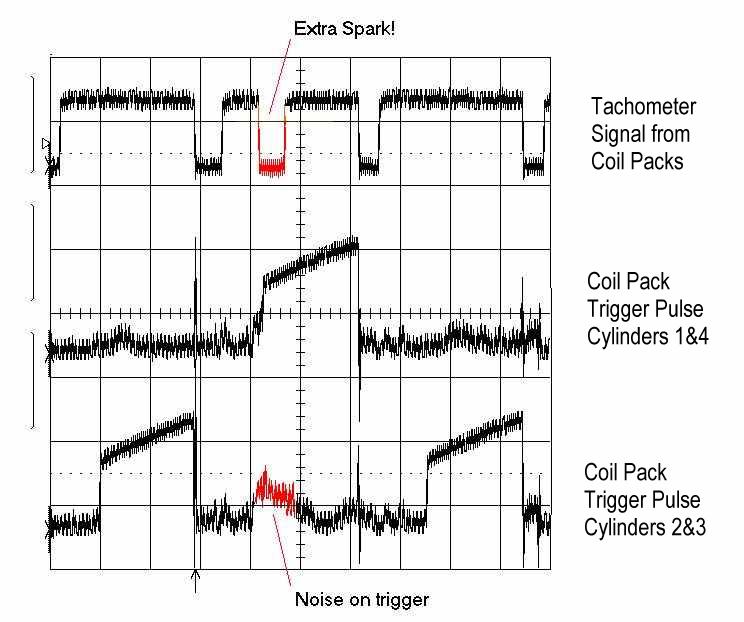
Data taken with a Lecroy 9360 digital strorage oscilloscope. It only cost $20,000 back in 1997. I borrowed it from work.
Here is a comparison of the tachometer signal on my 1994 miata shown with and without the ground nut loose.The top one is with the loose nut. Each downward pulse is read as a tach signal. With the loose nut, there are random extra pulses in the tachometer signal. This is what makes the tachometer needle jump around.
Poor Ground

Good Ground

Each pulse in the above signals corresponds to a spark from one of the coils.
So not only is the tachomater jumping, the engine is getting an extra spark
when it is not wanted!
Here's what was happening. Now we're looking at the tach signal on a different voltage scale, along with the trigger voltages to each coil pack. The trigger signals come from the computer and there are two of them. When a coil trigger goes up to 3 volts and drops back to zero, it causes that coil to spark.

As the coil for cylinders1&4 is triggered, the the coil fires. As this happens, electricl noise form the 15000 volt spark electrical induces noise on the trigger pulse for cylinder 2&3. This is shown in red. If it is large enough, the coil pack for those cylinders will spark. This is the extra pulse seen in the tachometer signal. Is this bad for the engine? The extra spark will occur when the cylinders are at the bottom of their power stroke or intake strokes. This might not hurt them, but it sure can hurt the coil pack which was not designed to be sparked this often. It can heat up and fail.
So for me, the key was to tighten down the ground wires. When this was done, the red stuff in the above traces went away.
This page gives my thoughts on the ignition process and the above signals.
Disclaimer: Not a certifed auto mechanic. Not a Mazda technician. The information on this page is my own interpretation and may be flat-ass wrong. Use at your own discretion.